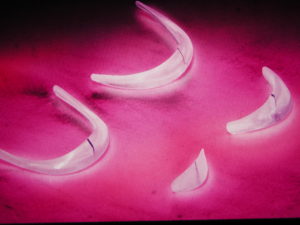Chin implant are a simple straightforward procedure that is very effective for improving horizontal deficiencies of the chin. Done through a small skin incision under the chin, the implant is slid into position on top of the chin bone. While there are different styles of chin implants for different cosmetic effects, the fundamental concept is that the chin implant provides a non-resorbable filler that expands the boundaries of the chin bone.
In addition to different styles, chin implants are also available in different materials. Occasionally asked by patients, does it matter what a chin implant is made of?

Less commonly used but well known are chin implants made of high-density polyethylene, also known as Medpor. This material is much more firm and inflexible but its surface is irregular and semi-porous. Unlike silicone, this material makes the chin implant harder to insert (requiring a bigger incision)…and remove if necessary…but it has frictional resistance against the bone so that it does not slide around as easily once positioned in place. This material is much harder and shaping it can only really be done with a powered rotary instrument. From a biologic perspective, a surrounding scar is still formed but it sticks to the implant better as the scar has grown into the pores of the surface of the chin implant. An argument can be made that this ingrowth of tissue into the implant is more biologic and better to resist infection. But the incidence of chin implant infections is so low that any real differences between the two materials is impossible to determine.
A third material exists that of polytetrafluoroetylene (PTFE) or Gore-Tex. It is most similar to silicone rubber because of its flexibility and ease of shaping with a scalpel. A smooth surrounding scar envelopes it as well after placement.
Do any of these materials make a difference? In my opinion….no. In the end the body treats all of them the same…with an enveloping scar that is not really different or conveys any superiority. Whichever material the plastic surgeon is most comfortable with is the best material for your chin implant procedure.
Dr. Barry Eppley
Indianapolis, Indiana


